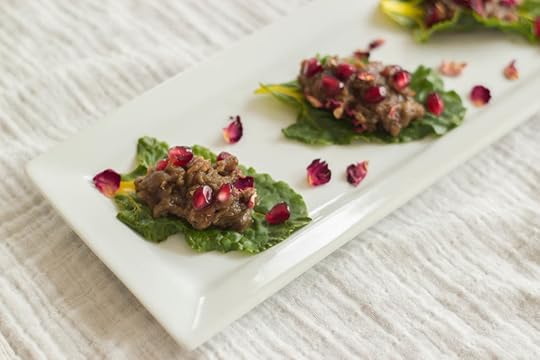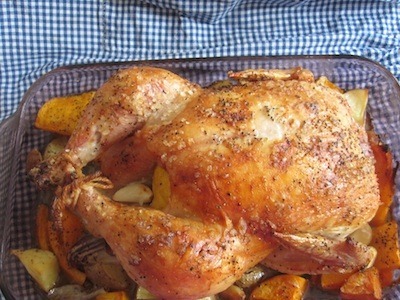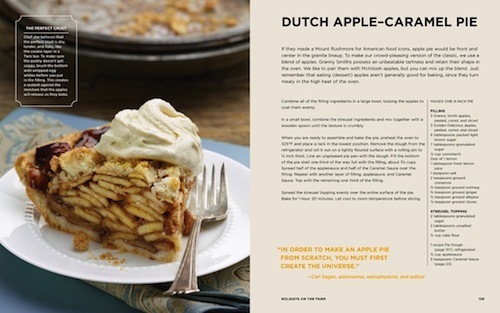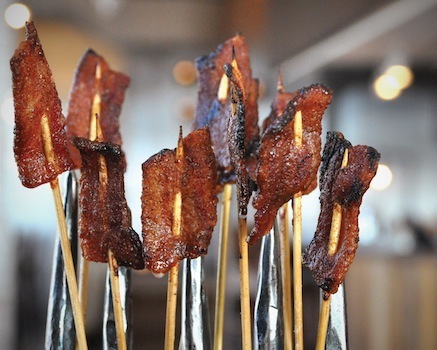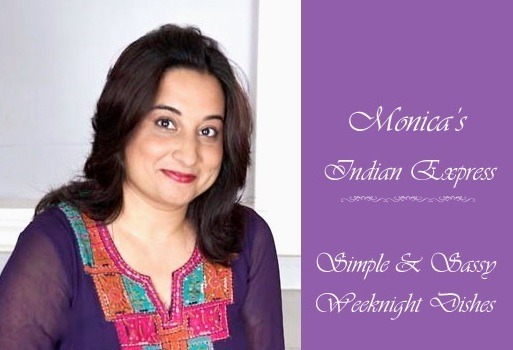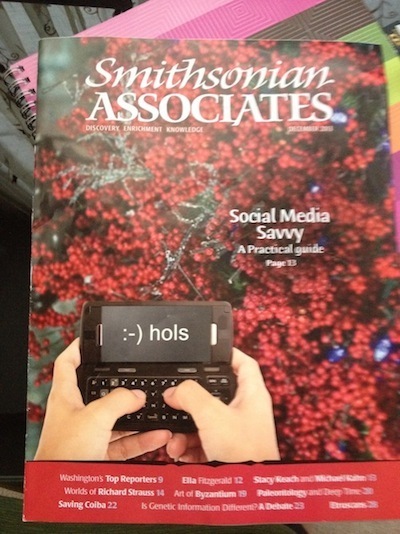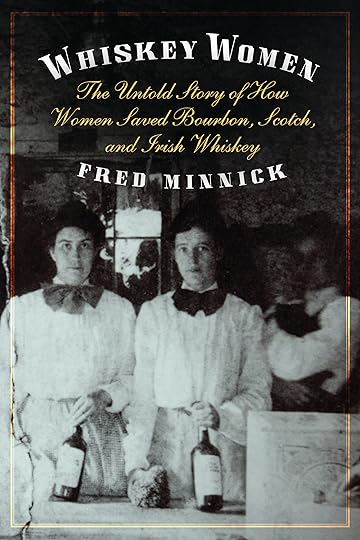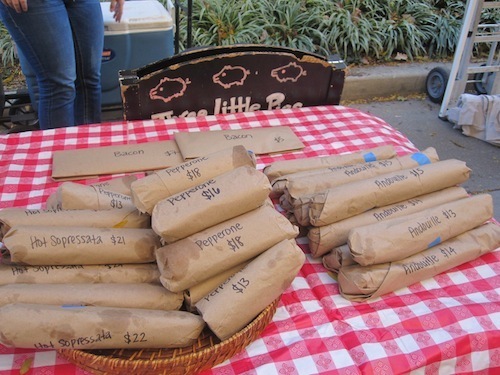Monica Saigal Bhide's Blog, page 25
December 22, 2013
Chocolate Walnut tortes with vanilla
A special for Life of Spice readers for the upcoming holidays. I rarely post desserts.. what can I say.. I dont need to eat them! But I LOVE this recipe that makes just enough to satisfy a craving but not take over my life. I hope you will try it. I am sure you will enjoy it. You will love that this fun recipe using empty soup cans!! My kids love vanilla which really shines in this recipe.
Chocolate Walnut Tortes
Adapted from “Small-Batch Baking” by Debby Maugans Nakos (Workman, 2005)
Makes 3 tortes
These delectable chocolate desserts are cooked in empty soup cans—just be sure to wash them thoroughly before using.
2 ounces premium-quality semisweet chocolate, finely chopped
½ cup walnut pieces
2 tablespoons all-purpose flour
3 tablespoons unsalted butter, at room temperature, plus more for greasing the cans
¼ cup sugar
2 large eggs, separated
½ teaspoon pure vanilla extract
Pinch of salt
Pinch of cream of tartar
Rich Ganache (recipe follows)
Place a rack in the center of the oven and preheat the oven to 375 degrees. Lightly grease the insides of three soup cans. Place the cans on a piece of parchment paper and trace around the circumference. Cut out 3 rounds of parchment and line the cans with them. Place the prepared cans on a baking sheet for easier handling, and set aside.
Place the chocolate in a small microwave-safe bowl and microwave on medium power until the chocolate is glossy and beginning to melt, about 1 minute. Then stir until smooth. Let cool.
Place the walnuts and the flour in a food processor and process until the walnuts are finely ground but not oily, about 10 -15 seconds.
Place the butter and sugar in a medium mixing bowl and beat with a hand-held electric mixer on high speed until creamy. Add the egg yolks, one at a time, beating well after each addition. Beat in the vanilla with the last yolk. Reduce the mixer speed to low and beat in the melted chocolate until blended, 10 to 15 seconds. Using a wooden spatula, gently stir in the ground walnut mixture.
Wash the mixer beaters and dry them thoroughly. Place the egg whites, salt, and cream of tartar in a small bowl and beat on high speed until the whites are shiny and hold stiff peaks, about 1 to 1 ½ minutes. Fold the egg whites thoroughly but gently into the chocolate mixture in two batches.
Spoon the batter into the prepared cans, dividing it evenly among them. Bake the cakes until a toothpick inserted into the center of one comes out clean, about 30 minutes. Do not overbake; the cake should remain soft and moist in the center.
Remove the cans from the oven and place them on a wire rack to cool.
When the cakes have cooled, invert the cans over the wire rack to release the cakes. Peel off the parchment paper and place the cakes upright on the racks. Pour about 3 tablespoons of lukewarm ganache over each cake, using a spatula to smooth the icing all over. Let the cakes stand until the ganache is firm, about an hour. The tortes will keep, covered, in the refrigerator for 2 to 3 days.
Rich Ganache
Makes about ½ cup
¼ cup plus 2 tablespoons heavy cream
5 ounces imported bittersweet chocolate (such as Lindt), finely chopped
Pour the cream into a small saucepan and bring to a boil over medium-high heat.
Immediately remove the pan from the heat and add the chocolate, swirling to submerge the chocolate in the hot cream
Let the mixture stand until the chocolate softens, about 1 minute, then stir with a whisk until the chocolate is melted and the mixture is smooth.
Allow the ganache to cool slightly, then pour over cooled tortes.
The post Chocolate Walnut tortes with vanilla appeared first on A Life of Spice.






December 21, 2013
Roses and Eggplant
My friend, the super talented writer Cheryl Tan, invited me to join a group of seasoned food bloggers. The goal of the group is to create themed posts around fun food topics. I have never done this before and thought it was a very cool idea. Then, she told me the first theme: daffodils. Well, I have to say that I was perplexed because a. I don’t cook with flowers and b. I would not know the first thing to do with daffodils. But, Cheryl is kind, and was open to my request of using a different flower. I know, I know, i should have used daffodils but let me at least try to pretend that I can be in a group of uber-talented food folks!!
Now, the same day Cheryl invited me, I was invited by Chef Maziar Farivar to his chic Georgetown restaurant Peacock Cafe for a taste of his native Persian cuisine. The food was, in one word, divine. A creamy pistachio soup with hints of citrus, grilled stuffed grape leaves with yogurt sauce, Feta cheese and basil-olive oil, and sour cherry-Basmati rice blend with grilled pomegranate glazed organic chicken thigh and drumstick were just some of the dishes that I found excellent. But, what really stole my heart was Chef Farivar’s appetizer featuring eggplant, pomegranate and, yes, roses. The velvety eggplant with the touch of rose and the sweetness of pomegranate arils was not just a delight for the taste buds but it seemed like the perfect way to welcome spring!
I requested the chef to share his recipe and here it is!! I also want to thank Rose Magpie for taking these amazing photos of the dish.
I hope my #letslunch group falls so in love with this rose petal dish that they forget and forgive me for not using daffodils!
Naaz Khatoon; A Roasted Eggplant and Pomegranate Dip
By Chef Maziar Farivar
Ingredients:
3 large eggplants,
1 large red onion,
12oz pomegranate juice ( Chef recommends POM)
ground cumin and coriander,
1 lg garlic clove
Dried rose pedals and fresh pomegranate seeds for garnish (when available)
Procedure:
Cut eggplants in half, lengthwise. Place them cut side down on a sheet pan and place in 350F oven for about 45-55 minutes, or until the meat is soft to the touch.
Once eggplants are cool enough to handle, scrape the meat away from the skin and set aside. Chop it roughly to make sure there are no large pieces.
Slice the onion in thin fairly uniform slices. Caramalize onion slices in a saute pan with some olive oil over medium high heat. Do not allow them to burn.
Place eggplant and onions in a medium sauce pan and add pomegranate juice (or continue to use the sautee pan if large enough). Add a tsp of salt, pepper, coriander and cumin and one crushed garlic clove. Bring mixture to a simmer and reduce pomegranate juice by more than half, so that the mixture is not runny. Taste to adjust the seasoning.
Now, we have a delicious eggplant-pomegranate dip, Naaz Khatoon. Place in a bowl, sprinkle some crushed rose pedals on top and serve chilled or at room temperature.
Presentation:
Place a bowl of Naaz Khatoon in the center of a large presentable tray, garnish with fresh pomegranate seeds and more dried rose pedals, urround by beautiful green leaves of your favorite lettuce and/or slices of pita or any other flat bread so to make bite size portions.
Enjoy!
Peacock Cafe, 3251 Prospect St. NW, 202-625-2740
I loved this titbit about Chef Farivar: In September 2012, Chef Maziar was recognized nationally as one the most prominent chefs and culinary leaders along with 80 other celebrity chefs, to become a Culinary Ambassador and a member of the American Chef Corps, part of a new Diplomatic Culinary Partnership between the State Department, its protocol office and the James Beard Foundation.
PLEASE FOLLOW THE REST OF THE GROUP HERE FOR THEIR WONDERFUL RECIPES:
1.Anne Marie Cruz: Veal Shank Redemption: The Zihuatanejo, a blueberry soda and thyme-braised veal shank with spring pea shoots. Yay!
2. Lisa Goldberg: Salad of Chargrilled Sourdough, Tomato and Haloumi Cheese
3. Nancie McDermott – Shad roe with grits and bacon.
4. Rebecca Seigel – Goat Cheese panna cotta with mango foam
5.
The post Roses and Eggplant appeared first on A Life of Spice.






December 19, 2013
Roast Chicken without a recipe
If you are looking for a recipe, then you wont find it here for this chicken. I am not sure there is one since each time I make this chicken, it is a little different but it always has one element that is the same – it is comforting. I never grew up on whole roasted chicken. My mother would always buy cut up chicken, marinate it and roast it that way. It tasted amazing.
It was here in the States many years ago that i first saw someone roasting a whole chicken and it fascinated me. The possibilities seemed so endless – how to marinate it, what to stuff in it and what vegetables to roast with it. This became my fun meal of choice – each time I tried something different. First, it took me the longest time to learn how to roast the chicken until it was cooked. I dont have a poultry thermometer so I would keep taking the chicken out every 20 minutes to see if it had cooked. My lesson learned was that the crispiness of the skin is NOT an indicator of how well the chicken is cooked. After many, many disasters, I learned that the chicken was done when I cut through the leg joint and did not see blood or the liquid ran clear. I usually now roast my 3 1/2 pounder at 400 degrees for about an hour and thirty minutes. That gives me the doneness I like and does not overcook the chicken.
Then I learnt about the skin and how to crisp it up. I tried so many different marinades like yogurt, lemon juice, olive oil and oh, so much more. I learned that nothing crisps up the skin like butter. Plain and simple. Butter rubbed all over the bird will really help the skin crisp up. Oh, one more thing. I never used to pat the bird dry before doing all that I was doing to it and it never cooked just right. Now I take the time to pat it really dry and then add my butter and seasonings.
Speaking of seasonings, this is where I love to play. I have tried harissa, Sriracha, Indian tandoori masala, fenugreek leaves (which made it into Modern Spice) and so much more. Happily, most results are great and really worth trying out. If you want the chicken in this photo, it has kosher salt and freshly ground pepper for seasonings.
And as for vegetables, I have found that any roots or hard vegetables work well. I usually make a bed of sweet potatoes, onions, squash or whatever else I have. Season it with salt and pepper and a bit of evoo and then put the chicken on top.
To truss or not to truss. I never trussed since most of my chickens are so small! But this one I did and it works well. A simple tie, nothing fancy.
Into the oven and then the waiting begins. Once the chicken is cooked, I pull it out and let it rest, covered for about 20 minutes. The juices that collect in the pan, all go into a saucepan. I just heat them up and let them thicken and then serve them on the side. I dont think this is the authentic way. I think you are supposed to add flour and butter. I dont. The juices along with the taste of the vegetables just seem to shine through without my messing a lot with it. So why try?
I haven’t learned to carve like Martha yet. I make a mess each time. i watch the videos, have friends show me but that is an art that still eludes me. The best part of that? I get to make more chicken till I learn how to get it right.
There is something so elegant about a whole roasted chicken. Perhaps it reminds me of all the holiday commercials I used to watch on TV in the US when I first moved here. I was lonely and my only outlet was the TV and reading magazines and books. Many a time I would encounter a gorgeous photo or video of a whole roast chicken and marvel at the warmth it seemed to generate at the table. Something about it says there is enough for everyone and more. SOmething about it whispers I care.
Perhaps I am too sentimental.
It has been a rough few months around the world with all the heartache and death. I have had friends lose dear ones and family members fall seriously ill. In all this time, I find myself turning to my husband and kids for comfort and all of us, in turn turning to food.
Food has such power, wouldn’t you agree? Not only to nourish but to give us comfort in difficult times. Each time I step into the kitchen these days, I am grateful for all that we have received and all that we can share.
The smell of roasting chicken in the oven always assures me that all is well in the world.
The post Roast Chicken without a recipe appeared first on A Life of Spice.






December 18, 2013
Bacon Lollies!
One of DC’s finest (in the food writing world) is writer Nevin Martell. I enjoy his work, his sense of humor and his classy attitude. When I heard that Nevin had teamed with the very terrific Founding Farmers restaurant to write a cookbook, you can bet I was in line to get it.
Years ago I wrote a story on Founding Farmers and remember it as being very rustic yet elegant. Developed by a collective of family farms, 42000 +, with Vucurevich Simons Advisory Group, Founding Farmers is popular with locals and tourists alike. The location that I have visited is housed in the IMF building and the restaurant seriously adheres to the “reduce, reuse, recycle” principles. This translates into décor of reclaimed wood and stone, sun- and wind-powered systems, and no toxic emissions from rugs and fabrics. I have to say that I am a big fan of their classic American dishes like Crab Cakes and Fried Chicken with Waffles, prepared with sustainable, locally sourced, in?season ingredients. And all of these are now in the wonderful book. It is a cookbook that you can actually cook from! I tested three recipes and they worked like a charm!
My favorite dish on their menu has remained their Bacon Lollies (Yes, Virginia there is a Santa Claus). They are THAT GOOD and Nevin and his team were kind enough to provide the recipe here for us. But, before the recipe, a little peek with Nevin on what it is like to work on a cookbook for the first time:
Behind the Book: The Founding Farmers Cookbook
By Nevin Martell
I was not in the most glamorous situation when the call came in about working on what would become the Founding Farmers Cookbook. I was en route home to D.C., somewhere in central Pennsylvania on a cold early spring day, filling up my tank with one hand and holding my phone with the other. As I answered, my eyes focused on the all-caps warning sticker plastered to the pump, “Use of cellular phones during vehicle refueling or fuel loading may cause fires or explosions and is prohibited at this site!”
Needless to say, I didn’t die that day (In fact, the myth that you can’t use your iPhone while getting gas unless you want to become the Human Torch has been thoroughly debunked). Several months later, I found myself in another scenario with its own, cheekier, warnings, including “Employees must wash hands. Everyone should.” That sign appears above the bathroom sink at Founding Farmers in Foggy Bottom, right next to this quote from Will Rogers, “There are three kinds of men: The ones that learns by reading. The few who learn by observation. The rest of them have to pee on the electric fence for themselves.”
I decided that my preferred educational route for writing the restaurant’s cookbook would be through observation and reading. No need to shock the monkey! This meant parking myself in the kitchen for long stretches of time to examine ingredients, watch food be prepared, record tips on cooking techniques, grab snapshots of how dishes were plated and pester the chefs with non-stop questions (“How do you know when a beignet has finished frying?” “Why did you call them Jonny’s Nuts?” “What’s the secret to making a perfect Hollandaise sauce?).
When I was finished for the day, I would go home to organize my notes, write and read the wobbly tower of books on my nightstand, which were a key part of my research. Since the idea of Founding Farmers sustainably sourced all-American cuisine draws so deeply from this country’s rich culinary and agricultural traditions, which can be traced back to the Founding Fathers, I wanted to gain a deeper understanding of that history. Of particular help were Dave DeWitt’s The Founding Foodies: How Washington, Jefferson, and Franklin Revolutionized American Cuisine, Thomas Jefferson’s Crème Brûlée: How a Founding Father and His Slave James Hemings Introduced French Cuisine to America by Thomas J. Craughwell and Thomas Jefferson’s Cook Book by Marie Kimball.
The next morning, I’d drive to one of the two Founding Farmers locations or their sister restaurant, Farmers Fishers Bakers, have a Manhattan Soda or three (coffee, espresso, a little agave and sparkling seltzer over ice with a crown of whipped cream – if you haven’t had one, you are seriously missing out), then dive back into my observational studies. Sometimes I would step away from the burners for epic tasting sessions with the staff, so I could familiarize myself with the more than 100 recipes that were going into the cookbook. Then I’d loosen my belt a few notches and get back into the hot, hot heat of the kitchen.
I was on a grueling schedule, since the book had to be written in just three months. On top of that, my wife gave birth to our first child, a joyful boy named Zephyr, right in the middle of the project. I can honestly say that the combination of fatherhood and cookbook authoring introduced me to completely new levels of exhaustion, elation and fulfillment.
Many months since the beginning of the process, I now hold the clothbound finished product in my hands, still slightly amazed. Like the restaurants, the book is dotted with apropos quotes – some serious, some silly. One of my favorites is from Orison Swett Marden, founder of Success magazine, “We must give more in order to get more. It is the generous giving of ourselves that produces the generous harvest.”
The Founding Farmers Cookbook was a collaborative creation, involving a lot of hard work and heart from many people. I hope that readers enjoy the generous harvest that resulted from those efforts.
Founding Farmers Bacon Lollis
Recipe and photo reprinted with permission from “The Founding Farmers Cookbook” By Founding Farmers and Nevin Martell (Andrews McNeel Publishing, 2013)
Makes 10 to 15 (10-inch) skewers
1/2 pound extra thick-cut applewood-smoked slab bacon (ask your butcher to slice it to 1/4-inch thick)
5 tablespoons Cinnamon Brown Sugar (recipe follows)
FF Cinnamon Brown Sugar
Makes 2 cups
1/3 cup packed dark brown sugar
2/3 cup packed light brown sugar
1/3 cup granulated sugar
1/4 cup ground cinnamon
1 teaspoon ground allspice
1/2 teaspoon ground ginger
1/2 teaspoon ground nutmeg
Whisk all of the ingredients until well combined. Store in an airtight container at room temperature for up to 3 months.
For the Bacon Lollis, you’ll need 10 to 15 (10-inch) bamboo or metal skewers. If using bamboo, soak them in water for 1 hour before using.
Preheat the oven to 350°F.
Cut the bacon slices into 2 1/2-inch pieces. Thread each piece of bacon on to the end of a skewer. Arrange the bacon skewers on a baking sheet lined with a metal roasting rack. Dust the bacon with half of the Cinnamon Brown Sugar and let it rest for 10 minutes.
Bake for 10 to 12 minutes, until it appears that the bacon has rendered at least half of its fat. Remove the skewers from the oven. Flip the skewers over and dust the other side of the bacon with the remaining Cinnamon Brown Sugar. Return the bacon to the oven and cook until crispy, about 5 minutes. Remove from the oven and serve warm.
The post Bacon Lollies! appeared first on A Life of Spice.






December 16, 2013
Monica’s Indian Express: Instant Pillsbury Biscuit-Bhatura
I am so pleased to share with you the next recipe in my series: Monica’s Indian Express: Simple & Sassy Weeknight Dishes.
This is not my recipe. I am not sure whose recipe it is! The recipe is everywhere and I am not sure who owns it.
It is one of the best kept secrets of modern Indian households in the US. I have been to so many dinner parties where these are made. I bet you Pillsbury never thought we would deep-fry their biscuit dough to create these gorgeous breads – an instant version of the Indian Bhatura. Well, that said, there really is no recipe here folks. All I can tell you is to remove the biscuit from the package and work quickly so that the dough does not get too warm. Flatten it out on a floured surface, roll it out and then deep fry it. That is pretty much it. The fried bread should be eaten soon. If you keep it for too long, it loses the crispness and becomes doughy.
Serve with a curry of your choice. I have been known to eat it as is. Don’t judge. Try it and then let’s talk.
Looking forward to hearing your experiences!
The post Monica’s Indian Express: Instant Pillsbury Biscuit-Bhatura appeared first on A Life of Spice.






December 10, 2013
Social Media Savvy Seminar for Smithsonian
I am so thrilled that my seminar made the cover of the Smithsonian catalog this month! BUY TICKETS Here is the detailed description –
Social Media Savvy: A Practical Guide to Personal Branding and Strategy
All-Day Seminar
Saturday, February 22 – 10:00 a.m. to 4:30 p.m.
Tickets -
BUY TICKETS
Everyone is online today, but does your presence in pixels best represent how you’d like to be seen? This seminar helps you create a social media identity and identify the key elements of a strategy to interact effectively and efficiently in the virtual world. Begin by understanding and defining the image that you want your “brand” (whether that’s yourself, your business, blog, or other online activities) to portray. Then examine how that information can provide a foundation for your identity and your social media presence. Participants explore the fundamentals of social media and its tools, including Facebook, Twitter, LinkedIn, and others. The pros and cons of each and their use in creating a social strategy are discussed to help identify which work best for your needs. Practical considerations, such as social media etiquette and learning how to use social media efficiently so that you manage it (and it doesn’t manage you), are also discussed. The day concludes with an interactive panel of social media pros who share their experiences and practical insights.
Panelists include Sarah Elizabeth Banks, manager of online engagement at the Air and Space Museum; Shashi Bellamkonda, vice-president of digital marketing at the Bozzuto Group, a real estate organization; Casey Benedict, a social media and food marketing innovator behind Kitchen PLAY and Eat Write Retreat, platforms that connect brands with bloggers. Sean Gardner, a consultant and correspondent for Social Media Week, Huffington Post, and Smedio, named by Forbes as one of the top 50 social media power influencers in 2013; Elianne Ramos, principal and CEO of Speak Hispanic Communications and vice-chair of marketing and public relations for Latinos in Social Media, who specializes in U.S. Latino and Latin American advocacy campaigns; and Monica Sethi, founder and president of e-Buzz Edge, a firm specializing in public relations, marketing, and branding for the restaurant industry. The seminar is led by Monica Bhide, who has presented nationally on social media and was coach-in-residence on social media for the American Food Journalist Associations’ annual conference in 2013.






December 9, 2013
Behind the Book
I am so delighted to present a terrific book:Whiskey Women: The Untold Story of How Women Saved Bourbon, Scotch & Irish Whiskey by Fred Minnick. I found this book fascinating and it is the first of its kind – a book that talks about the history of women in whiskey. ”Women have never received credit for their efforts in the alcohol industry,” says Minnick, an award-winning spirits writer. Whiskey Women, as the press release I received mentions, explores the forgotten women who invented beer and distillation, owned and operated iconic whiskey brands, managed dangerous bootlegging operations and saved the spirits industry from Prohibition.
BUY NOW - Whiskey Women: The Untold Story of How Women Saved Bourbon, Scotch & Irish Whiskey
I asked Fred Minnick if he could share a few thoughts about the writing of the book with us and he kindly obliged.
Whiskey Women, Behind the Book
By Fred Minnick
It was not easy obtaining sources for Whiskey Women: The Untold Story of How Women Saved Bourbon, Scotch & Irish Whiskey
When I was first seeking sources, most people’s initial reaction was to laugh, thinking I was planning to write a whiskey-laden sex script of loose women. After they learned Whiskey Women was not about tar-lunged strippers and that it was a serious book, they laughed again, only crediting Carrie Nation for influencing whiskey’s demise during Prohibition. Granted, there were many people and brands that were exceptionally helpful, but so many people dismissed my endeavors.
Instead of relying on people to give me women’s names, I searched libraries and archives in major whiskey towns. One archive didn’t even have a computer system; I searched through a card catalogue like the one I used in the third grade. This kind of research is so rewarding because Google’s spiders have yet to find, scan and stream the papers I sourced. In total, I cited more than 50 original manuscripts dating as far back as 1200. Some of my sources have never been used.
Even though I wrote the proposal for this book and had a great understanding of women’s influence, I had no idea how important they were until I started digging in medieval records and American arrest records. There would end up being quite a few sexed up women, but in my scholarly fashion, I credit U.S. prostitutes for the mass distribution of whiskey in the 1800s. They received commissions for selling liquor and made millions.
BUY NOW - Whiskey Women: The Untold Story of How Women Saved Bourbon, Scotch & Irish Whiskey
ABOUT Fred Minnick ?Whiskey Women: The Untold Story of How Women Saved Bourbon, Scotch & Irish Whiskey is Fred Minnick’s third book. His first book, Camera Boy: An Army Journalist’s War in Iraq, became a Wall Street Journal-bestselling eBook. Minnick writes the award winning “American Whiskey” column for Tasting Panel Magazine and the “Toasting the Hunt” for Covey Rise. He contributes to Bourbon Review, Costco Connection, USA Today, Whisky Advocate, Whisky Magazine, and many others. Minnick is also the “Bourbon Authority” for the Kentucky Derby Museum.






November 20, 2013
Whole baby cauliflower spiced and roasted
My partnership with FRESHFARM markets continues today, with this final post, and a trip to the Foggy Bottom Market. The market is open for just another week before closing down for winter so be sure to visit them on Nov 27th.
I went to school at George Washington University and lived right at Foggy Bottom so I really have a soft spot for the Foggy Bottom area. The tiny little market is just right for the area – tucked behind the metro escalator, it is a great place to stop and pick up what you need before heading home. They sell everything from fresh bread to cooked foods to desserts from my favorite Baklava Couture!
My intent was to buy Brussels Sprouts and show you how to make this lovely dish for a Thanksgiving side. Ah, but the market had other plans for me. While I found what I was looking for, what really caught my attention were these tiny baby cauliflower. I spoke with Patrick, who was manning the booth for Blueberry Hill farm stall, about how he liked to cook them. His favorite — roast them with rosemary! 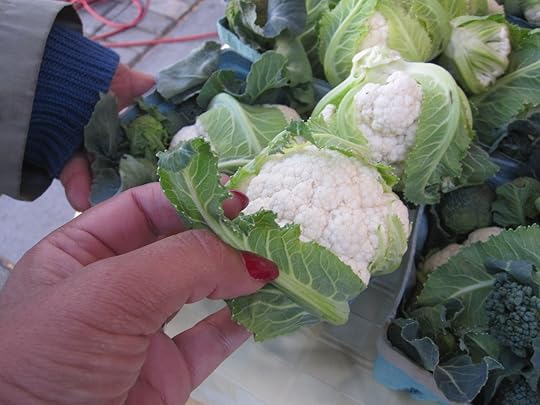

I decided to something different with them.
Monica’s Individually Spiced Whole Roasted Baby Cauliflower
Heat the oven to 450 degrees.
Instead of roasting them with a single marinade, I prepared three different ones. Each marinade had a base of olive oil, a touch of salt, some lemon juice and then one of these three prepared mixes - Ethiopain Dukkah mix, Moroccan Ras El Hanout and Indian Madras Curry.
Prepare the cauliflower by removing all the green parts and cut the base to remove any thick stem.
Place the cauliflower on an oven safe tray.
I used three baby cauliflower and doused each one with a different marinade. You can use your choice of spices here.
Roast for about 45 minutes.
Serve hot. These little gems can be one a person or half a person for a great side.






November 18, 2013
Where in the world is Monica?
Come join me!
NEW EVENTS ADDED
1. Sept 17-21 — Coach in residence at AFJ conference in Utah.
“Monica gave our members great information about using social media, and got them fired up about it. She explains things clearly and with style. And she gave personal attention to members’ needs in one-on-one sessions with conference attendees. Her talks left us motivated and inspired.”
Debbie Moose, President, Association of Food Journalists
2. October 9th at 7:00 pm – Signing copies of Modern Spice and cooking up samples in Arlington
One More Page Books
2200 N. Westmoreland Street #101
Arlington, VA 22213
703-300-9746
www.onemorepagebooks.com
3. October 26th (NOW ON DEC 7TH) – Teaching a full day seminar on Food Writing at the Smithsonian in DC — sign up!! Here is the deal on this one –The promo code below -199848—has been created for “friends of Monica Bhide” for the upcoming Food Writing seminar. Use it to register for the program in-person or online (online you will be prompted to entire it) and it will entitle you to The Smithsonian Associate member rate of $90.00 (as opposed to the $130.00 ticket price for general admission).
4. Nov 2nd at the Metropolitan Cooking show! I will be signing copies of Modern Spice and talking about writing cookbooks! At 11:00 am, I will be discussing cookbooks – how to write them and how to sell them. Then, at 1:30, I will be interviewed by Jummy Olabganji for WJLA. Come by!!
5. Nov 3rd. I will be at Union Market with the Kids Food Festival doing a hands on cooking demo for 50 kids at the James Beard Cooking Pavilion.. Come by!!
6. Nov 10th at a event for the DC Culinary Historians- CHoW- talking about Sacred Foods of India.
7. Dec 5th – Guest speaker at SAJA
7. Feb 11th – Holding an event at the Smithsonian talking about demystifying spices.
8. Feb 22nd – Teaching a full day workshop at the Smithsonian about social media for entrepreneurs and small business owners.
9. April — Speaking at FoodTECH – Roger Smith conference






Join the movement of Hope!
In January 2014, I will complete ten years of following my dream to become a writer. In Jan 2004, I changed from a full-time consulting job that paid six-figures, to live my dream of becoming a writer. These ten years have taught me a lot about life, the need for tenacity, the value of support systems, the lessons of failure and so much more. My last ten years, spent in the pursuit of my dream, have been POWERED BY HOPE.
POWERED BY HOPE is my new, one-year long digital storytelling project. It is FREE to subscribers. This digital project focuses on sharing what I have learned. I am hoping that as I make my “mess my message,” I can help other people pursue their goals and dreams. Each week, readers will get a story that is intended to be motivational.. but mostly to get people thinking. Mondays, they will get a story, and on Fridays, they will be able to interact with me LIVE on Facebook as we discuss the topic at hand.
Here’s the link to subscribe to my newsletter - this is a soft launch. The digital storytelling newsletter will launch in January 2014.
I hope you will sign up. I would be so honored to have your support.







